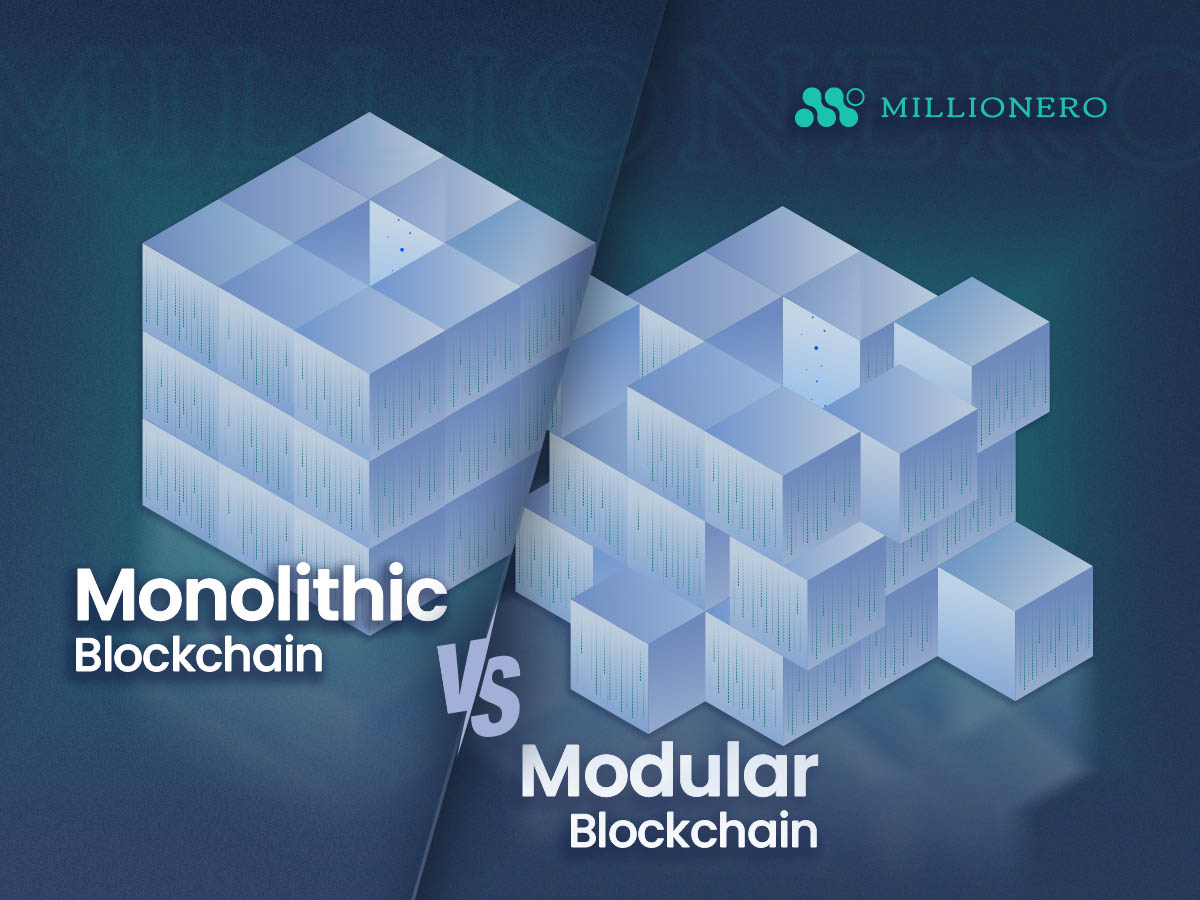
Blockchain, a leading technology in the digital age, powers secure decentralized applications. As it evolves, two main architectures have emerged: Monolithic vs Modular Blockchain.
These differences should help stakeholders in business and development make the right choice between the two. In this blog, we’ll explore what monolithic and modular blockchains are, how they function, and provide examples to illustrate these concepts.
What is a Monolithic Blockchain?


As mentioned earlier, a monolithic blockchain system in which all features and processes are integrated into one interconnected structure. This means that the consensus, storage of data, running of smart contracts, and so on are all performed as part of a single system.
How Monolithic Blockchains Work
Monolithic architectures implement all processes within the same system. Here’s how they operate:
- Consensus Mechanism: This process ensures the validity of transactions across the network.
- Data Storage: The system records and preserves all transactions without alterations.
- Smart Contracts: Smart contracts encode the terms of agreements directly into the software.
- Networking: This structure facilitates communication and data exchange between nodes.
Advantages of Monolithic Blockchains
- Simplicity: All functions are integrated, eliminating the need for complex interactions between modules.
- Security: A unified system can be easier to secure, with fewer potential points of attack.
- Efficiency: Reduced inter-module communication can lead to improved performance and efficiency.
Examples of Monolithic Blockchains
- Bitcoin: Launched in 2009, Bitcoin is the first digital currency, built on a highly centralized design focusing on secure peer-to-peer payments.
- Ethereum (Pre-2.0): Before its transition to Ethereum 2.0, Ethereum operated as a centralized blockchain, integrating smart contracts, data storage, and consensus into one chain.
What is a Modular Blockchain?


Modular blockchains, on the other hand, separate these functions into distinct modules that can interact with each other but operate independently. This approach allows for more flexibility and customization.
How Modular Blockchains Work
In a modular blockchain, different modules handle specific tasks:
- Consensus Layer: Manages the agreement process for transaction validity.
- Data Availability Layer: Ensures transaction data is accessible and retrievable.
- Execution Layer: Handles the execution of smart contracts and transactions.
- Networking Layer: Facilitates communication between different modules and nodes.
Advantages of Modular Blockchains
- Flexibility: Modules can be updated or replaced without affecting the entire system.
- Scalability: Each module can be optimized independently, enhancing overall scalability.
- Specialization: Modules can be tailored for specific tasks, boosting overall performance.
Examples of Modular Blockchains
- Cosmos: Designed for interoperability between multiple blockchains, Cosmos uses a modular Hub-and-Zone architecture.
- Celestia: Focuses on scalable and flexible blockchain data availability and consensus through a modular framework.
Monolithic vs Modular: A Detailed Comparison
Security
- Monolithic: Generally easier to secure due to fewer integration points.
- Modular: Security is more complex due to multiple modules, but each can be individually secured and optimized.
Scalability
- Monolithic: Limited by the capabilities of a single integrated system.
- Modular: Enhanced scalability as each module can be scaled independently.
Flexibility
- Monolithic: Less flexible due to the integrated architecture.
- Modular: Highly flexible, allowing updates and modifications to individual modules without disrupting the entire system.
Future Trends and Innovations
- Cross-Chain Interoperability: The ability for different blockchains to communicate and interact is increasingly important. Modular blockchains like Polka dot and Cosmos are leading the way in cross-chain interoperability solutions.
- Layer 2 Solutions: Layer 2 solutions, such as the Lightning Network for Bitcoin and Plasma for Ethereum, are being developed to enhance monolithic blockchains’ scalability. These solutions allow off-chain transactions, reducing the load on the main blockchain.
- Decentralized Finance (DeFi): Both monolithic and modular blockchains play key roles in the rise of DeFi. Ethereum’s smart contracts (monolithic) and Polkadot’s customizable chains (modular) demonstrate how these architectures support decentralized financial systems.
Conclusion
The debate between monolithic vs modular blockchains is shaping the future of blockchain technology. While monolithic blockchains offer simplicity and security, modular blockchains provide flexibility and scalability. Understanding the strengths and weaknesses of each can help businesses and developers choose the right architecture for their needs.
As blockchain technology continues to evolve, we can expect innovations that blend the best of both worlds, creating more efficient and versatile blockchain solutions.
Want to learn more about the crypto world? Visit Millionero to explore the ins and outs of crypto trading and get involved!

